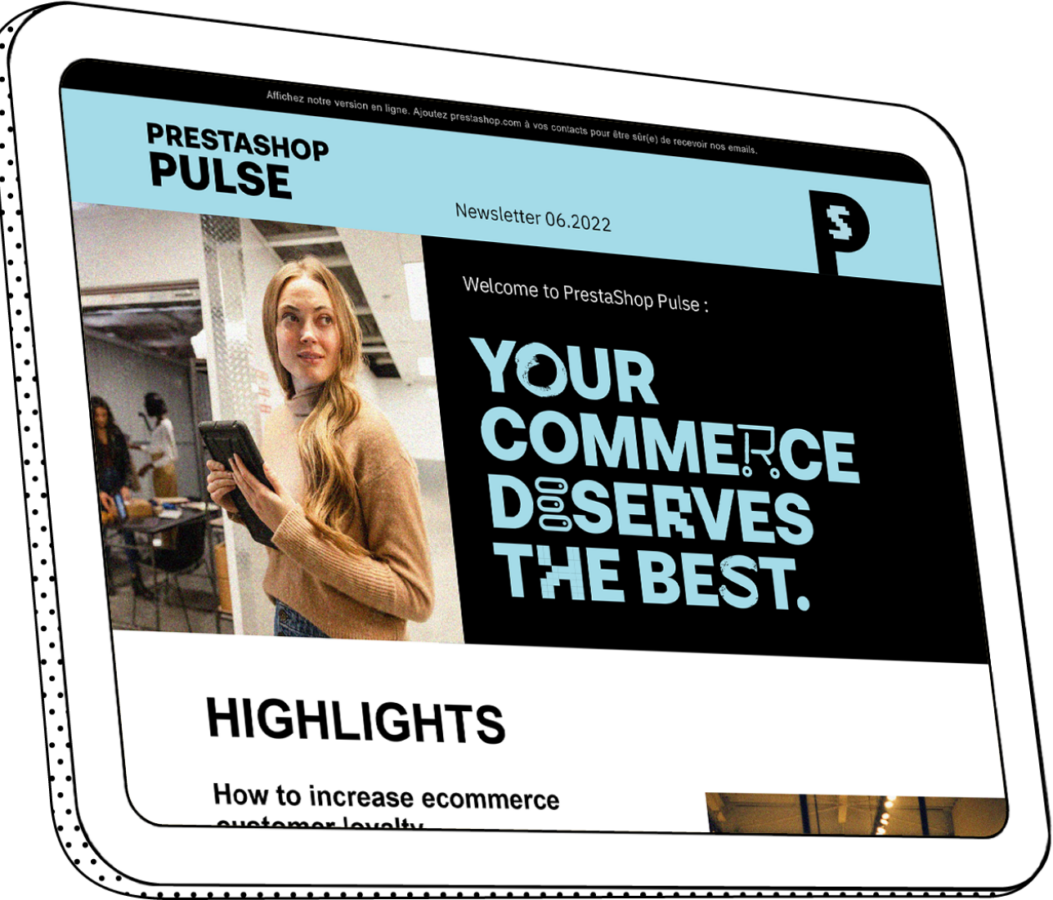
The customer experience: A source of costs or revenue?
Among the many parameters that guarantee success in the world of ecommerce, the customer experience (CX) plays a crucial role. Yet, many companies often neglect this essential factor and consider improving the customer experience as too high an investment. In this article, we’ll show you how a well-thought-out CX strategy can turn upfront spending into profitable investments over the long term.
Is the customer experience really that expensive?
On an ecommerce site, the customer experience refers to all customer interactions and perceptions, from the first visit to after their purchase. To give you an idea of the importance of this customer journey, a Salesforce survey reveals that nearly 90% of shoppers consider the experience offered by a company as important as its products and services.
However, too many online stores view improving the customer experience as just an additional expense. It's certainly hard to deny that hiring staff for after-sales service, setting up sophisticated chatbots, or integrating artificial intelligence (AI) tools can seem expensive. These investments can discourage smaller online stores even more.
However, focusing only on initial expenses would be a mistake when talking about the customer experience. To fully understand the impact of CX, looking at the long-term return on investment (ROI) is essential. This is where the notion of customer lifetime value (CVV) comes into play.
Customer lifetime value (CVV): A key indicator
Customer lifetime value (CVV) is a measure of the profit generated by a customer throughout their relationship with a business. In other words, a loyal and satisfied customer is more likely to come back and spend more.
Offering discounts and special offers is no longer enough to make your customers want to return. According to a Redpoint study, 74% of consumers feel that brand loyalty is about feeling understood and appreciated, not about enjoying discounts and benefits.
Investing in CX should be seen as a tool to encourage customer retention and engagement and thus increase CVV.
Specific example
Let's take the example of an online store that uses PrestaShop. Let’s say they decide to invest in automated customer service with chatbots that can answer common questions and support customers 24/7.
Despite an initial cost that may seem high, the benefits can quickly justify this investment:
- Reduced staff costs: A chatbot can handle hundreds of conversations simultaneously and can replace a dedicated customer service team.
- Improved customer satisfaction: Quick and relevant responses increase customer satisfaction and encourage them to come back.
- Increased Sales: A satisfied customer is more likely to make repeat purchases. Even more importantly, they can then become an ambassador for your brand and recommend your online store to those around them.
Automation and efficiency: The winning duo
The rise of automation tools is good news for all ecommerce businesses that can benefit from these advances to quickly and effectively improve CX. Chatbots and conversational AI systems are great tools to make the customer experience a source of revenue.
By optimizing the customer journey, personalizing interactions, and quickly solving problems, these new technologies increase customer satisfaction and loyalty. A Deloitte survey indicates that brands that excel in personalization are 48% more likely to exceed their revenue goals and 71% more likely to improve customer loyalty.
Examples of CX tools for the customer experience
- Smart chatbots: They can guide customers through the purchase process, answer common questions, and even offer complementary products based on user preferences.
- Artificial intelligence: AI analyzes customer behaviors to anticipate their needs and provide personalized offers. Another benefit is that AI is constantly improving interactions based on feedback and collected data.
- Automated after-sales service: Tools like automated tickets and preset responses can speed up troubleshooting and therefore customer service efficiency.
Expenses that can pay off big
Expenses related to CX improvement are not only costs but strategic investments. In fact, a study conducted by Oracle shows that 81% of consumers say they are willing to pay more for a better customer experience.
By putting your customers at the center of your ecommerce strategy, you turn every interaction into an opportunity to retain and attract new customers through positive word-of-mouth. Better CX can also reduce after-sales service costs and decrease product return rates.
Conclusion: The customer experience, a lever for growth
The customer experience should not be perceived as merely an expense but as a significant growth lever for your online store. Beyond the initial investment, leveraging automation tools and innovative technologies offers significant long-term benefits. An optimized customer experience on an ecommerce site is a key to opening up increased loyalty, an increase in sales, and ultimately, an increase in revenue.





